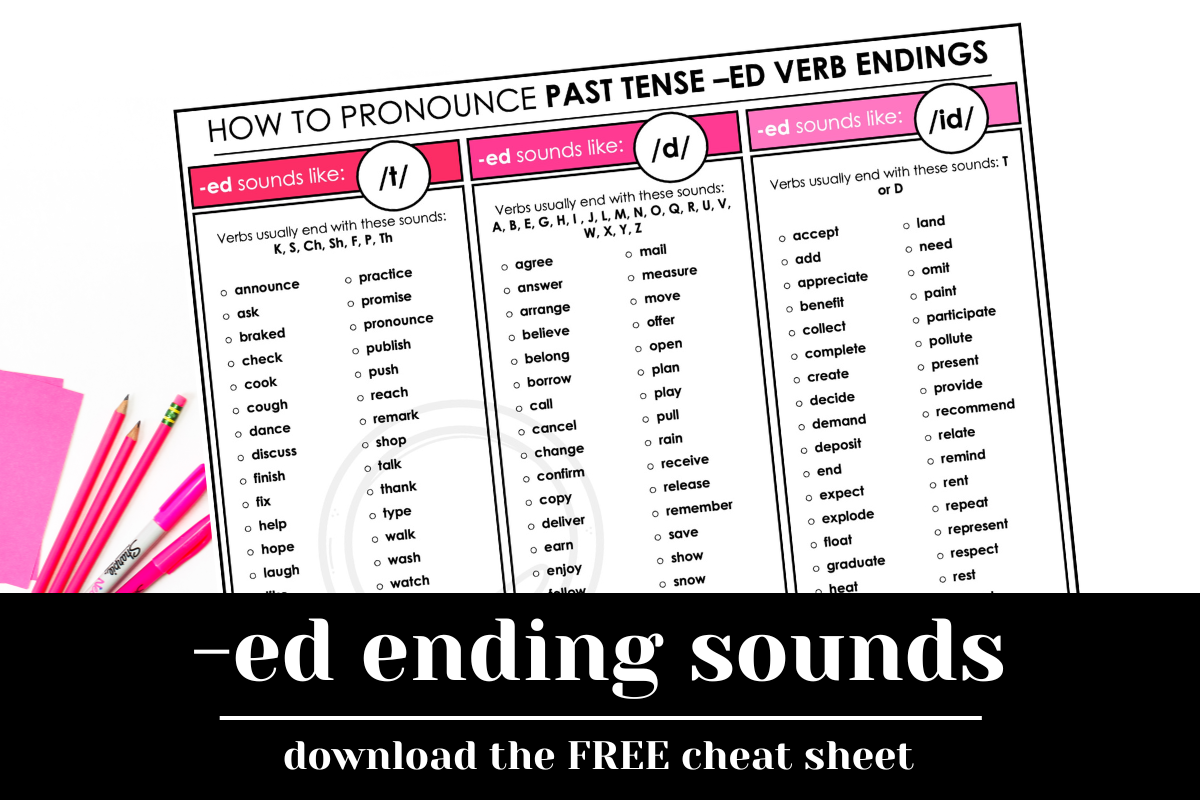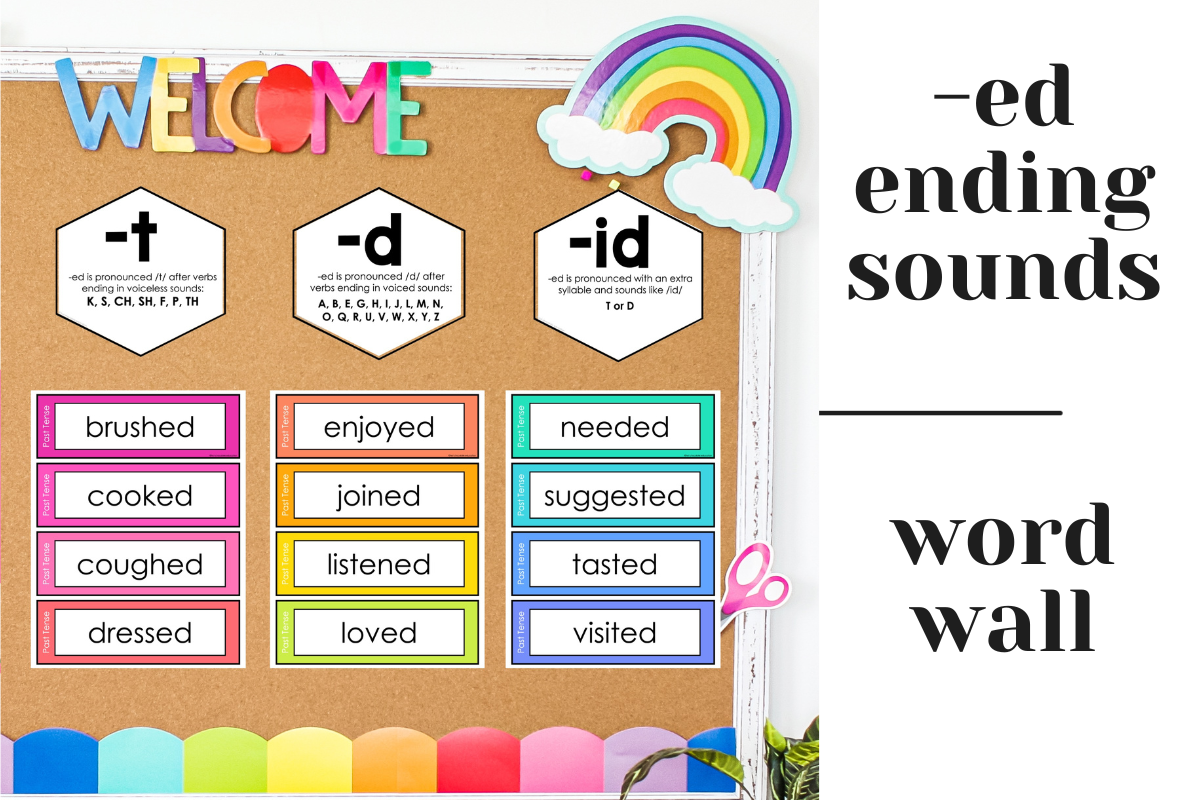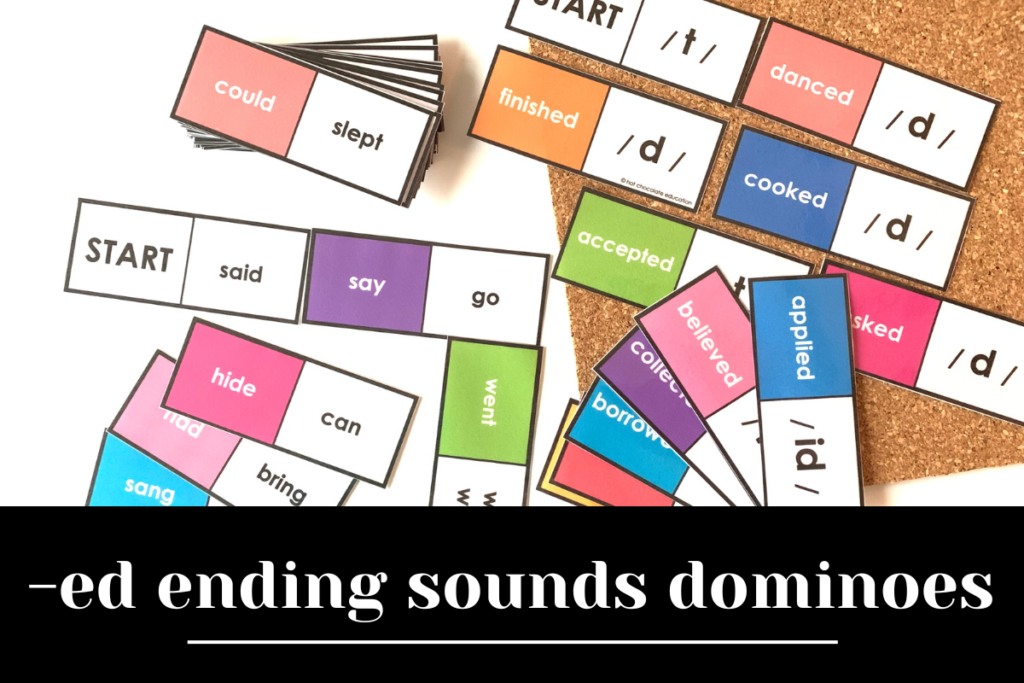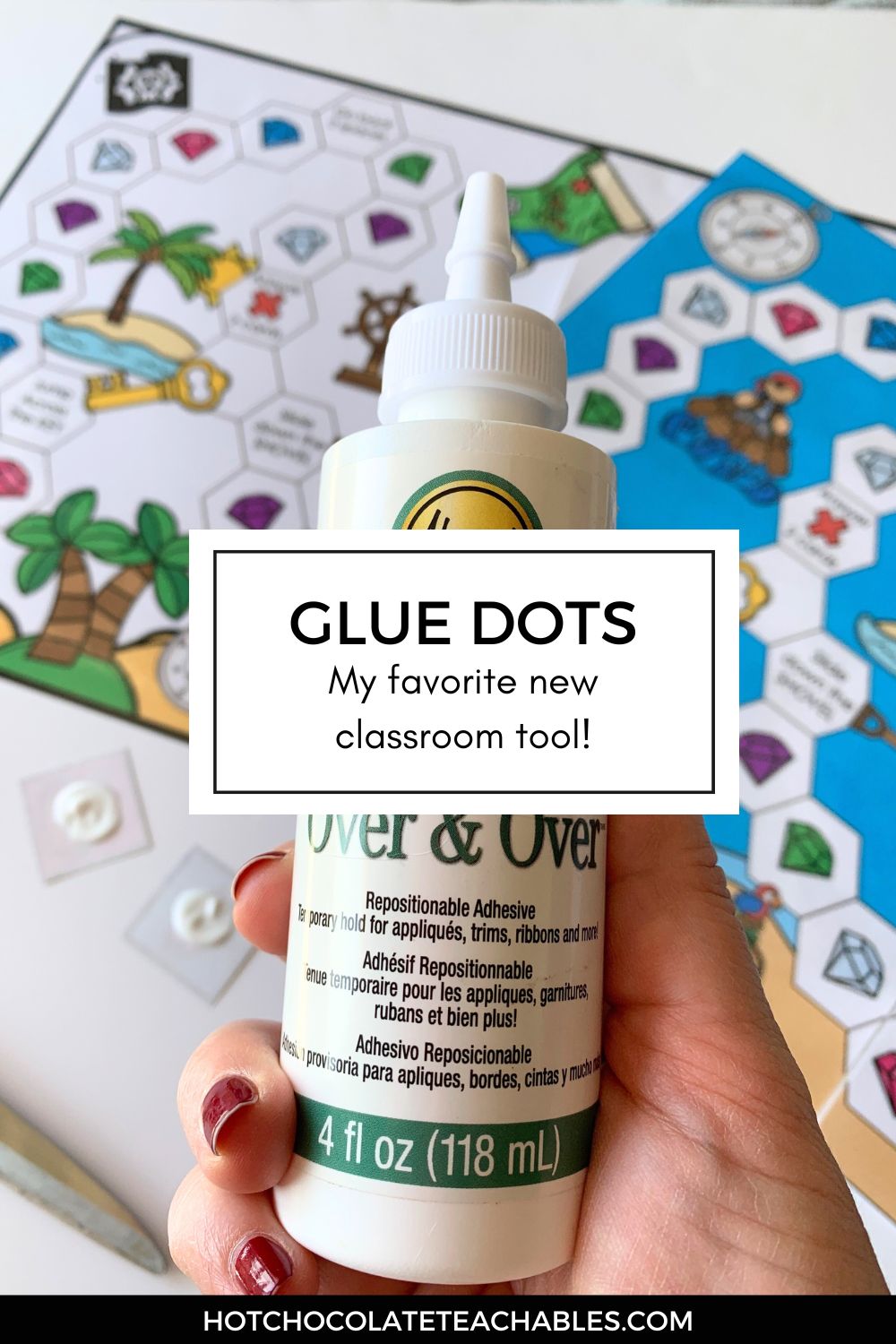How to teach -ed ending pronunciation of past tense regular verbs
For many language learners, the concept of three distinct ending pronunciations for the same ending can seem difficult. As always, practice makes perfect! Grab my -ed ending sounds CHEAT SHEET for an easy reference to help students learn Verb Past Tense -ed Endings /t/d/id/.

Introduce the concept of the three different pronunciations for the -ed ending in regular past tense verbs to the learners. Display three regular past tense verbs on the board as examples:
- Select a verb that ends in a -d or a -t (e.g., want, need).
- Choose a verb that ends in a vowel or a voiced consonant (e.g., cleaned, saved, enjoyed).
- Pick a verb that ends in a voiceless consonant (e.g., laugh, finish, stop).
Verbally articulate these examples for the class, placing emphasis on the final sound of each verb. Encourage learners to actively listen and identify the sound they hear for each verb. To facilitate understanding, articulate the verbs slowly and repeat the pronunciation of the past tense verb ending multiple times.
Clarify that in the English language, the -ed ending of regular past tense verbs can be pronounced in three different ways based on the final sound of the verb:
- When the verb concludes with a -d or a -t, the -ed ending is pronounced as a new syllable, /id/.
- If the verb ends in a vowel sound or a voiced consonant (l, n, r, b, g, m, z, s, v), the -ed ending sounds like a /d/ and does not create a new syllable.
- For verbs ending in an unvoiced consonant (p, k, f, gh, sh, ch, ss, c, x), the -ed ending sounds like a /t/ and does not create a new syllable.
-ED ENDING SOUNDS WORD WALL for past tense verb endings

This concept can passively reinforced using a word wall as classroom decor. A word wall serves as a reference point for students and can be used all year. A verb word wall can be a valuable resource in an ESL (English as a Second Language) classroom. Here three different effective ways to utilize a verb word wall:
- Visual Reference:
- Display the verb word wall prominently in the classroom for easy visibility.
- Use large, clear font and vibrant colors to make the verbs easily identifiable.
- Verb of the Day:
- Feature a “Verb of the Day” from the word wall.
- Discuss its meaning, usage, and encourage students to use it in sentences throughout the day.
- Verb Charades:
- Play verb charades using the verbs from the word wall.
- Encourage students to act out the verbs while their classmates guess the action.
Still looking for more ways to practice?

The objective of this PAST TENSE VERB DOMINO game is to reinforce the pronunciation of regular and irregular past tense verbs with emphasis on the ending pronunciations (-t, -d, -id). Players will match the base form of the verb with its corresponding past tense form while paying attention to the ending sound.
Materials:
- Regular and Irregular Past Tense Verb Dominoes set
- A flat playing surface
Instructions:
- Set Up:
- Distribute the dominoes to the players.
- If playing in small groups, each player can start with an equal number of dominoes.
- Mixing and Shuffling:
- Ensure the dominoes are well-shuffled before starting the game.
- Initial Placement:
- Place the START domino in the center of the playing area as the starting point.
- Matching Rules:
- Players take turns matching the base form of a verb with its correct past tense form.
- Match the dominoes by connecting the end of one word to the beginning of another based on the matching past tense form.
- Pronunciation Check:
- As players make matches, emphasize the pronunciation of the past tense ending (-t, -d, -id).
- Encourage players to say the past tense form aloud to reinforce correct pronunciation.
Ready to move on to IRREGULAR VERBS?
If your students have already mastered Past Tense Regular verbs, you might be ready to move on the IRREGULAR VERBS. Check out this blog post full of games and activities specifically targeted to teaching IRREGULAR PAST TENSE verbs.
If haven’t already downloaded my handy Past Tense Verb endings cheat sheet, you can do so by clicking the link here: VERB ENDING CHEAT SHEETS
You can print in black and white to use as a student notebook reference or in color to hang up in your classroom!



